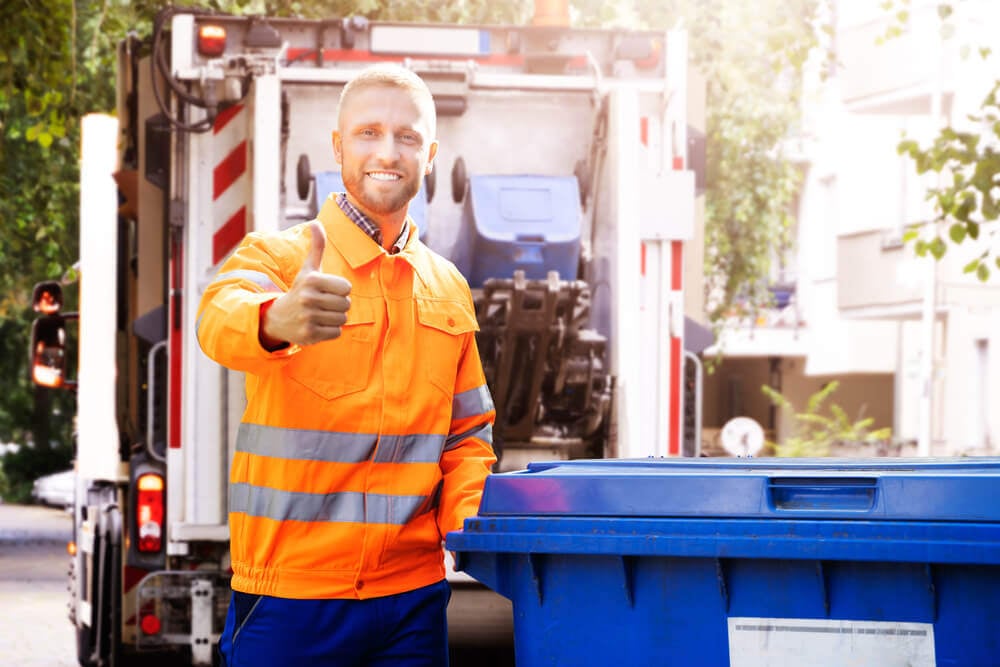Recycling is essential for companies looking to minimize waste and conserve resources. It transforms materials that could otherwise end up in overflowing landfills into reusable products. By implementing an effective recycling program, you not only reduce environmental impact by decreasing the need for new raw materials but also lower energy consumption and greenhouse gas emissions.
Additionally, a strong recycling initiative could potentially lead to cost savings for your properties. Engaging your tenants in recycling efforts fosters community awareness and encourages sustainable practices, contributing to a greener living environment.
This blog will guide you through the key elements of establishing a successful recycling system tailored for your properties. We will cover best practices, pitfalls to avoid, and innovative solutions to make recycling accessible and efficient for everyone involved. By the end, you will be equipped with the knowledge and tools necessary to implement an effective recycling program that benefits both the environment and your community.
Understanding Recycling
Recycling involves collecting, processing, and transforming materials that would otherwise be discarded into new products. This practice conserves natural resources and reduces pollution by lowering the demand for raw materials and the energy consumption linked to manufacturing. By prioritizing recycling, you can extend the life cycle of materials, cut down on waste, and promote a more sustainable living environment.
Despite its advantages, misconceptions about recycling are common. One prevalent myth is that all materials with recycling symbols are recyclable; this isn't always true, as recycling rules differ by location and facility. Another misconception is that recycling is effortless and requires little consumer involvement. In reality, proper sorting and cleanliness of recyclables significantly affect the efficiency of recycling programs.
To implement effective recycling, it's vital to know which materials are typically recyclable. Common recyclables include paper products, cardboard, glass bottles, metal cans, and certain plastics, often categorized by their resin identification codes. Familiarizing yourself with local recycling guidelines is essential to ensure that the right materials are recycled, leading to a more effective program.
Assessing Your Current Program
Evaluating your current recycling efforts is a crucial step in improving your program's effectiveness. Start by conducting a thorough audit of your practices. Collect data on the types and quantities of materials being recycled and those that end up in the waste stream. Analyzing this data will help you identify strengths, like high participation rates in some areas, and weaknesses, such as low recycling rates for certain materials.
Next, engage with stakeholders, including employees, tenants, and local waste management authorities, to gather feedback on the recycling process. This dialogue can reveal common barriers to participation, such as lack of awareness or confusion about recycling procedures.
Benchmarking your program against successful initiatives in other communities can provide useful insights. Consider which best practices can be adapted for your properties. This assessment will help you establish targeted strategies for improvement and set clear, achievable goals to enhance your recycling efforts moving forward.
Setting Clear Goals
Establishing specific, measurable objectives is crucial for the success of your recycling program. Clear goals provide direction and enable you to track progress, making it easier to engage stakeholders and maintain momentum. When goals are clearly defined, it becomes simpler to motivate participation, as everyone involved understands the intended outcomes and their role in achieving them.
Setting attainable recycling goals, such as increasing the recycling rate by 20% in a year or implementing a new system in every building within six months, can help track progress. Additionally, aiming to reduce contamination in recycling bins by 15% through education creates milestones for regular performance assessments and necessary adjustments.
Aligning recycling goals with overall waste reduction enhances the effectiveness of sustainability initiatives. For example, to divert 50% of waste from landfills in two years, recycling should be integrated with composting and waste reduction practices. This comprehensive strategy promotes a culture of sustainability and advances environmental objectives.
Educating and Engaging Participants
Raising awareness about recycling is crucial for the success of any program. Effective strategies include using multi-channel communication (newsletters, social media, community meetings) to share benefits and practices, along with visual aids like posters. Training sessions can enhance understanding of sorting techniques and contamination reduction.
Providing resources like brochures keeps information accessible. Ongoing education is vital due to changing recycling landscapes, and engaging campaigns can spark interest. Celebrating milestones reinforces community efforts and encourages ongoing participation in sustainability initiatives, fostering a culture of recycling for a greener environment.
Implementing the Program
Launching a successful recycling initiative requires careful planning and execution. Start by developing a comprehensive strategy that defines your goals, identifies materials to collect, and partners with recycling facilities. Clear, accessible recycling guidelines are essential to inform participants about what can be recycled, using simple language and examples.
Effective signage near recycling bins promotes awareness and proper practices, while placing bins in high-traffic areas encourages participation. By following these steps, you can create a sustainable recycling program that significantly impacts waste reduction in your community.
Monitoring and Improving the Program
To ensure the success of your recycling program, it's crucial to track recycling rates and measure progress through regular data collection, audits, and collaboration with waste management services. Establishing a baseline allows for trend analysis, while feedback loops from participants can help identify barriers and improve compliance.
Sharing progress reports with stakeholders enhances accountability and engagement. Lastly, a data-driven approach enables timely adjustments to the program, fostering a culture of sustainability and environmental stewardship in the community.
Conclusion: Building a Sustainable Recycling Future
In summary, establishing a successful recycling program hinges on thorough planning, effective education, and continuous improvement. By developing clear guidelines, engaging participants through various communication channels, and implementing monitoring strategies, communities can foster a culture of sustainability that significantly reduces waste. It is crucial to stay responsive to changes in the recycling landscape and encourage active participation through innovative initiatives.
We invite you to take action now towards building or enhancing your recycling program. For further assistance and resources, do not hesitate to contact CERTIFIED to discuss your current recycling program and property goals.
.png?width=320&height=80&name=CERTIFIED%20Waste%20Solutions%20Logo%20Vector%20NO%20Tagline%20(4).png)
.jpg)


.jpg)
.jpg)

.jpg)